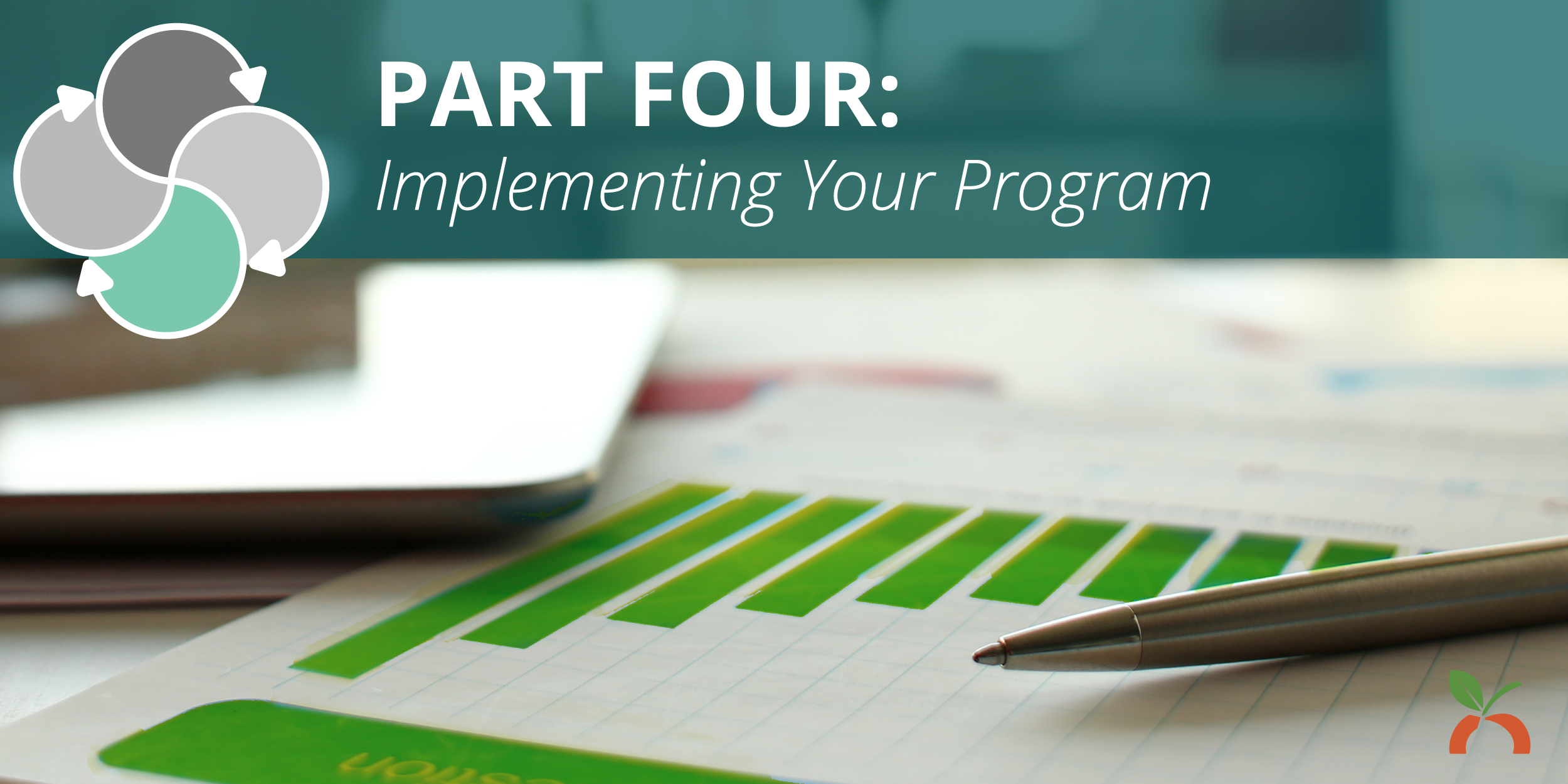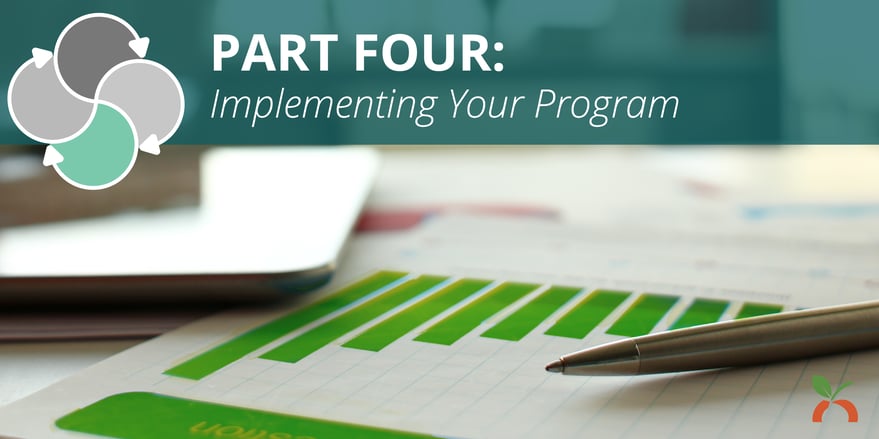This blog post is part 4 in a series exploring the use of an HRA in developing a health intervention plan using research from Wellsource student intern Kori Pitt. In this example program, Kori outlines an example workplace obesity intervention program called the Triple W Challenge. Catch up on the series:
- Part One: Process Overview
- Part Two: Assessing Your Workplace Health
- Part Three: Planning Your Program
Once intervention planning is finished, it is time to put the plan into action. This step comes after pilot testing and planning is over and the intervention is ready for implementation on a larger scale.
Implementing your Health Intervention Program
Employee involvement during all stages of program implementation is the most effective strategy for changing behavior and culture. Promote employee participation by engaging them to contribute to program design and implementation. Workplaces vary in size, design, location, health experience, and resources. Employees will also vary in characteristics from age, mental abilities, resiliency, education, and cultural background. A successful workplace intervention will take into consideration the various needs of both the employees and the organization. One size does not fit all, and flexibility is key for effective program implementation.
Triple W Challenge example for marketing and service delivery
The HRA provides the initial point of contact for recruitment for the Triple W Challenge. The feedback from the HRA allows individuals to reflect on their own health choices and can motivate them to want to change. Flyers and announcements at company meetings are other ways to market the program. Below is an outline of the various components that will be included in the Triple W Challenge:
Community-level outreach: Three 1-hour long sessions will be held in a break/conference room for participants during lunch/break hours. These sessions include 15 minutes of mindfulness training at the beginning, 15 minutes of nutrition education, and 30 minutes of physical activity at the end. The sessions will be led by trained dietitians, mindfulness teachers, and personal trainers.
- The mindfulness training portion will incorporate mindfulness-based stress reduction (MBSR) that will teach participants to pay attention to the present moment and decrease reactivity. The training will provide tools that participants can use throughout their daily lives. An additional 15-minute mindfulness training session will be held twice a week in the morning for participants as well.
- The nutrition education portion will center around promoting a nutrient-balanced diet full of fruits and vegetables. Participants will learn about good and bad fats, how to limit processed foods, and portion sizing.
- The physical activity portion will include group exercise activities of walking or yoga.
Environmental-level outreach: To create or enhance a culture of health within the organization, messaging will be delivered company-wide, in addition to messaging and training delivered specifically to the targeted population.
- Flyers and posters will be hung around the office/building that display support for healthy choices such as exercise, a healthy diet, and mindfulness.
- Management should be consulted to initiate and support activities related to worksite intervention. Management will be given materials to conduct wellness-themed events and contests, change cafeteria environments, increase employee stair use, and offer flexible work schedules that encourage participation in this program.
- Vending machines will have nutrition labels posted and unhealthy cafeteria food will be replaced with healthier options. This includes labeling cafeteria food with colors to help employee’s indicate which foods are most appropriate to eat, based on their goals. (green = highly nutritious, yellow = eat in moderation, red = stop, don’t eat)
- Employers can offer a healthcare plan that has a wellness option in addition to this program.
Individual-level outreach: As a technology-supported intervention, the Triple W Challenge also offers severely obese participants the option to opt into a text system that is self-monitoring for behavior change goals. The text messages emphasize ways the participants can modify their behaviors to lose weight, eat better, and relieve stress. The text messages will have a positive, uplifting tone and will suggest ways to adopt a healthy behavior or overcome a perceived barrier.
Triple W Challenge Impacts:
Short Term: Change in Knowledge and Attitudes
- Increased awareness of obesity related health conditions
- Increased understanding of the benefits of physical activity
- Developed confidence and positive experiences of exercise
- Increased self-confidence
- Improved perceived stress levels
- Increased awareness of healthy diet benefits
Medium Term: Change in Behaviors
- Increased participation in physical activity during and after work
- Increased use of mindfulness when feelings of stress occur
- Improved diet by replacing unhealthy foods with healthy alternatives
Long Term: Change in Prevalence
- Reduced obesity prevalence
- Reduction in costs associated with obesity such as lost workdays and decreased sick time
| In next week's final installment of this series, we will explore the next step in the process: monitoring and evaluating the program. |
Meet Kori Pitt, MPH
 Kori Pitt obtained her BS in Public Health at the University of Nevada, Reno in 2013. She recently graduated with her Master’s in Public Health from the University of Arizona. Kori’s program concentrated in health promotion, where she examined health behavior and developed skills in implementing and evaluating health interventions on a population level.
Kori Pitt obtained her BS in Public Health at the University of Nevada, Reno in 2013. She recently graduated with her Master’s in Public Health from the University of Arizona. Kori’s program concentrated in health promotion, where she examined health behavior and developed skills in implementing and evaluating health interventions on a population level.
Kori's internship at Wellsource involved performing research on lifestyle behaviors affecting obesity in working females. She performed statistical analyses on health risk assessment data and created an evidence-based workplace intervention framework for obesity. Kori is passionate about chronic disease education and prevention and bridging the gap between public health research and practice.








